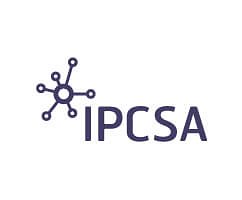PCS for Small and Medium Ports
 IPCSA Guidelines
IPCSA Guidelines
on
Port Community Systems for Small and Medium Sized Ports
Background
Even prior to the COVID-19 pandemic and the “Call for Action” for ports to fast-forward their role as digital nodes in the supply chain, small and medium sized ports were considering, developing, implementing and, in some cases, already operating Port Community Systems.
Although the principles of Port Community Systems (PCS) are the same for every size of port, small and medium sized ports may have different drivers and varying levels of financial resources available to operate a PCS – so while the larger ports enable operations through digitalisation, other ports often question where they should start and whether it is appropriate for them to implement a PCS.
In response to this uncertainty, IPCSA has created a simple set of guidelines to help small and medium sized ports to consider PCS implementation and how to go about it.
Purpose of these guidelines
These guidelines are designed to help small and medium sized ports assess their readiness for the development and implementation of a PCS, providing a broad outline to enable organisations to understand the steps involved in building a successful PCS. The guidelines should be seen as a supporting document to give some direction in the digitalisation of your port environment.
We have chosen not to categorise what a small or medium sized port is, as this is something better understood by the port operators themselves.
IPCSA Guidelines for Port Community Systems for Small and Medium Sized Ports
- What is a PCS
- Create a common understanding of what a PCS is (see IPCSA guide).
- Find examples of PCSs in ports of similar size and share and exchange how things are done and how they did it (IPCSA can support).
- Ask – what problems do we have in our port?
- Physical – infrastructure, traffic queues, etc.
- Paper/documents
- Processes
- Digital review
- High-level digital review – countrywide – to establish the existence/involvement of:
- Single Window and Maritime Single Window
- Port Community System
- Air Port Community System
- Authorities involved in cargo, including Customs and phytosanitary
- If, as a Port Authority, the port has a system in place regarding port operations or services related to the community.
- Other relevant technology such as electronic transactions regulation (payments, ID, signature/certificates, etc).
- Digital Port Review:
- Review all systems within the Port Authority and the key stakeholders and what status and maturity they are at.
- Does the port have sufficient IT skills and support?
- Data standards:
- Include in the review which, if any, data standards are being used by Authorities – such as WCO, IMO FAL, UNCEFACT, etc.
- Review which standards are being used by port users – such as EDIFACT, XML, APIs, etc.
- High-level digital review – countrywide – to establish the existence/involvement of:
- Stakeholder engagement and feedback
- Engage stakeholders through discussions and workshops about key challenges and what can be resolved – encourage feedback, even if critical:
- Collaboration
- Data sharing
- Confidentiality and cybersecurity
- Create a stakeholder group of those wishing to embrace digital technology.
- Agree with stakeholders a process or several processes that could be improved through digitalisation and prioritisation.
- Engage stakeholders through discussions and workshops about key challenges and what can be resolved – encourage feedback, even if critical:
- Business and operating models (governance)
- Identify a suitable business model (see IPCSA guide).
- Identify a suitable operating and financial model:
- Infrastructure as a Service (IaaS)
- Software as a Service (SaaS)
- Platform as a Service (PaaS)
- Cloud as a Service (CaaS)
- Function as a Service (FaaS)
- IT infrastructure options
- Local PCS hub (create and manage your own IT infrastructure).
- Cloud-based hub (using cloud services to provide IT infrastructure).
- Remote or hybrid hub (using technical provider to provide IT infrastructure).
- Data security and confidentiality
- Assessment of current cybersecurity within port and associated stakeholders.
- Subject to IT infrastructure – how secure is the data?
- No Big Bang
- Start small – one process at a time; prioritise with stakeholder agreement.
- Remember that trying to do everything tends to be more costly and has a higher risk of problems.
- Plan, review, share, implement and launch
- Plan – the PCS and the prioritised processes to be covered.
- Review – the processes and check/establish that digitalisation of these processes will make a difference.
- Share – share your plan and review it with all stakeholders – do not be afraid to admit if something is wrong and you need to look at it again.
- Implement – create an implementation plan and communicate with stakeholders.
- Communication
- Create a mechanism of constant communication with all stakeholders – be honest about status, challenges and problems.
- Ask for help in sharing this with the whole community.
- Acknowledge all those that have supported you – and communicate this to all stakeholders.
- International standards
- Use international data standards and map these across to other standards being used by stakeholders in your port.
- Technology – “don’t follow the herd”
- Technology initiatives should be driven by business processes. Do not follow the herd by using the latest technology or innovation, unless:
- It suits your needs
- It is secure and mature
- It is stable
- Choose technology-neutral solutions that allow you to adapt to new technologies and innovations.
- Technology initiatives should be driven by business processes. Do not follow the herd by using the latest technology or innovation, unless:
- ‘In order to stay the same, you have to change’
- Constantly review the business and operating model and do not be afraid to change it.
- Plan for the unexpected – pandemics, trade disputes, etc.
- Review services and processes and adapt them to fit current needs and technology.
- Redefine the PCS and its model as it evolves.
These recommendations act as a general guide to ports to support them in understanding where they are in terms of digitalisation, with a specific focus on Port Community Systems and whether they are in a position to move on to the practical development of a PCS in their port. IPCSA also publishes a ‘How to Develop a PCS’ guide, which can be considered in parallel to the recommendations above.
About IPCSA:
IPCSA represents Sea and Air Port Authorities, Port Community System Operators, Single Window Operators and Air / Cargo Community Systems Operators across all regions of the world. IPCSA recognised across the globe for providing advice and guidance on the electronic exchange of information across borders and throughout the whole supply chain.
Contact: Inga Morton, IPCSA, General Manager – Email: inga.morton@ipcsa.international







